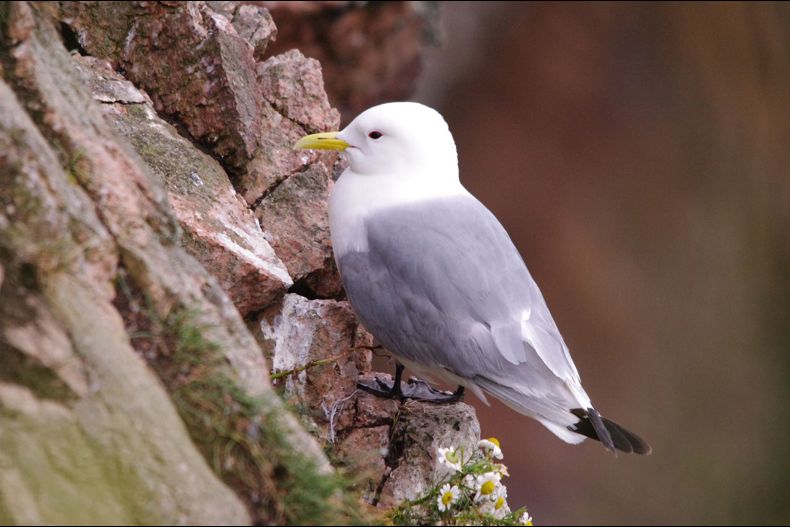
The Berwick Bank Offshore Wind Farm project, Seagreen Offshore Wind Farm (Seagreen) and Neart na Gaoithe (NnG) Offshore Wind Farm, are joining forces with STRIX, world leaders in innovation and sustainability, to carry out the first seabird interaction study of its kind in Scotland on a commercial sized wind farm at the NnG site.
The study has been devised in collaboration with RSPB, NatureScot, Joint Nature Conservation Committee and Marine Scotland Science.
STRIX will carry out an extensive two-year operational study with cameras and radars installed on nine of NnG’s 54 wind turbines.
The system provided by STRIX will focus on gannets and kittiwakes, the species of seabirds identified as being most at risk of collision and displacement from offshore windfarms located in the Forth and Tay.
The study will monitor flight activity and provide further insight into how these seabirds behave around offshore wind turbines. It will also improve understanding of the behaviours of other species such as lesser black-backed gulls and great black-backed gulls.
The study is of significant importance to Scotland as results taken from the work will be used to inform the future consenting of offshore wind farms in the North Sea.
Matthias Haag, NnG Project Director, said: “As the developer of a major offshore development in Scotland, we are committed to doing everything we can to minimise and to monitor the impact our project may have on local wildlife and the seabirds who inhabit areas in close proximity to NnG.
“This world leading study, working with RSPB, NatureScot, Joint Nature Conservation Committee and Marine Scotland Science will be the first of its kind to ever be carried out in Scotland and I’m really pleased to be collaborating with SSE Renewables, TotalEnergies and STRIX, delivering a project that will play an important role in the future of offshore wind in Scotland.”
Seagreen, a joint venture between TotalEnergies and SSE Renewables, is currently being constructed around 27 kilometres off Scotland’s Angus coast. At 1.1 gigawatts (GW), the offshore wind farm will be capable of generating enough renewable energy to power more than 1.6M UK homes and save around 2M tonnes of CO2 emissions annually. When complete in early 2023 it will be Scotland’s largest and the world’s deepest fixed bottom offshore wind farm.
John Hill, Seagreen Project Director said: “We are delighted to get the opportunity to be involved in a study of this size and importance. Collaboration with key stakeholders and other developers is critical to delivering offshore wind sustainably and in the most appropriate locations.”
Berwick Bank Wind Farm, which is being developed approximately 43km off the coast of East Lothian in the Outer Firth of Forth by SSE Renewables, could generate up to 4.1GW and commence generating clean electricity by 2026 if consented.
Alex Meredith, Project Director for Berwick Bank Wind Farm said: “We understand that through developing offshore wind we have an important part to play in addressing the nature emergency as well as the climate emergency. We are therefore very pleased to be involved with this landmark study.
“We are seeking to gain unprecedented insights into seabird activity across the Firths of Tay and Forth and to use the findings to inform our future projects both in Scotland and further afield. We recently completed the largest known digital aerial bird survey for a single project in the world and this additional work will compliment these studies greatly”
Miguel Repas, Chief Executive Officer at STRIX said: “We are committed to support wind energy development while preserving wildlife in the Firths of Tay and Forth.
This study combines key technologies, such as radar, with innovative data analysis to deliver critical understanding of seabird behaviour near turbines”
Dr. Aly McCluskie, Senior Conservation Scientist at the RSPB said: “Offshore wind is crucial to help tackle climate change and meet net zero carbon obligations. It must though be developed in harmony with nature and in parallel with work to protect and restore marine wildlife.
“Fundamental to this is reducing the uncertainty surrounding the assessment of impacts on seabirds. This study will improve our understanding of interactions of birds with turbines in a three-dimensional space and will be of great value to the sensitive development of wind farms in the future.
“The RSPB is proud to be a part of the study and welcomes the collaborative approach of the developers, working alongside stakeholders, to achieve our common strategic aims.”
Erica Knott, NatureScot’s Marine Sustainability Manager, said: “The study will help us understand how our internationally recognised seabird populations interact with operating windfarms.
“This in turn will help inform the location and design of future developments supporting the delivery of seabird conservation measures, whilst meeting ambitious and necessary climate change targets.
“We welcome the collaborative nature of this project and look forward to continuing to work with the developers and STRIX as the work gets under way.”

